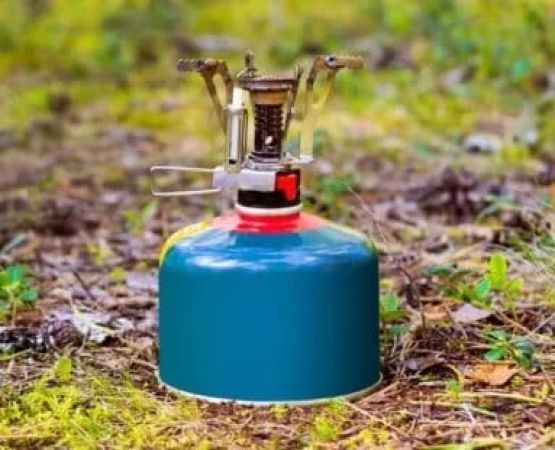How to Camp Safely in Bear, Wolf, or Mountain Lion Country: Essential Tips for Adventurers
- 1. Understanding Wildlife Risks in Bear, Wolf, or Mountain Lion Country
- 2. Best Practices for Camping in Wildlife Territory
- 3. How to Set Up a Safe Campsite in Bear, Wolf, or Mountain Lion Country
- 4. What to Do in Case of a Wildlife Encounter
- 5. Preparing for Wildlife Dangers: Essential Gear for Safety
1. Understanding Wildlife Risks in Bear, Wolf, or Mountain Lion Country
Camping in bear, wolf, or mountain lion territory can be an exciting and rewarding experience, but it also comes with risks. Bears, wolves, and mountain lions are powerful, intelligent animals that can pose a threat to campers, especially when they feel threatened or are surprised. Understanding these animals' behavior and how to minimize risks is key to enjoying a safe outdoor adventure.
While the likelihood of an encounter is low, these animals are more active in certain seasons, particularly during their feeding times in the spring and fall. Bears may be attracted to food smells, while mountain lions and wolves might be drawn by the scent of pets or other animals.
2. Best Practices for Camping in Wildlife Territory
When camping in areas where bears, wolves, or mountain lions are known to roam, following best practices will significantly reduce your chances of a wildlife encounter. Here are some essential tips:
- Store food properly: Always store food in bear-resistant containers or hang it from a tree, at least 10 feet off the ground and 4 feet from the trunk. Avoid leaving food out in the open.
- Keep a clean campsite: Clean all dishes and cooking utensils immediately after use, and dispose of trash properly. Never leave food scraps in or around your campsite.
- Use bear-proof equipment: Use bear-proof coolers, garbage bags, and food storage lockers wherever available to prevent attracting wildlife.
- Stay aware of your surroundings: Be mindful of animal tracks, scat, or signs of wildlife activity around your campsite. Always keep an eye out for changes in the environment.
By following these guidelines, you can ensure that your campsite remains undisturbed by bears, wolves, or mountain lions.
3. How to Set Up a Safe Campsite in Bear, Wolf, or Mountain Lion Country
When setting up camp in wildlife-prone areas, your campsite's location and setup are critical for safety. Here’s how to maximize your safety:
- Choose a safe location: Set up camp in an open area, away from dense vegetation where wildlife might hide. Avoid setting up camp near animal trails or near water sources, as these areas attract animals.
- Keep your tent sealed: Always zip up your tent completely, especially at night. Animals can be attracted by the scent of food inside your tent.
- Establish a "kitchen" area: If you're camping with multiple people, designate a cooking area far away from your sleeping area (at least 100 yards). This helps prevent animals from associating your food with your campsite.
- Light up the campsite: Keeping your campsite lit during the night can deter some wildlife from approaching. Consider using solar lights or battery-powered lanterns.
By carefully selecting your campsite and following these tips, you'll help minimize the chances of a wildlife encounter while keeping your camp safe and secure.
4. What to Do in Case of a Wildlife Encounter
Despite all precautions, it’s still possible to encounter a bear, wolf, or mountain lion. Here’s how to handle each situation:
- If you see a bear: Stay calm, make yourself appear larger by standing tall, and slowly back away. Do not run, as this could trigger the bear’s chase instinct. If the bear charges, use bear spray if available.
- If you see a wolf: Make noise and try to appear as large as possible. If the wolf approaches, shout or use an air horn. Wolves generally avoid humans but can be aggressive if threatened.
- If you see a mountain lion: Do not run. Make eye contact, stand tall, and back away slowly. If the mountain lion attacks, fight back using anything you can find—use your hands, rocks, or a stick to protect yourself.
In any wildlife encounter, remaining calm and confident can make all the difference in preventing a dangerous situation.
5. Preparing for Wildlife Dangers: Essential Gear for Safety
Having the right gear is crucial when camping in bear, wolf, or mountain lion country. Here are some items to bring for added safety:
- Bear spray: This is an essential item for anyone camping in bear country. Bear spray is an effective deterrent in case of a close encounter.
- Food storage containers: Invest in bear-proof containers or hanging systems to safely store food away from animals.
- Noise-making devices: Whistles, air horns, or bells can be useful to alert animals to your presence and deter them from approaching your campsite.
- Headlamps and flashlights: Staying visible in the dark helps deter nocturnal wildlife and keeps you safe when walking at night.
Having these tools on hand will ensure you are prepared for any wildlife threats, making your camping experience safer and more enjoyable.
If you're planning a camping trip in wildlife-rich areas, consider booking your stay at Pine Cliff Resort. They offer a safe and scenic camping experience close to outdoor adventures.






